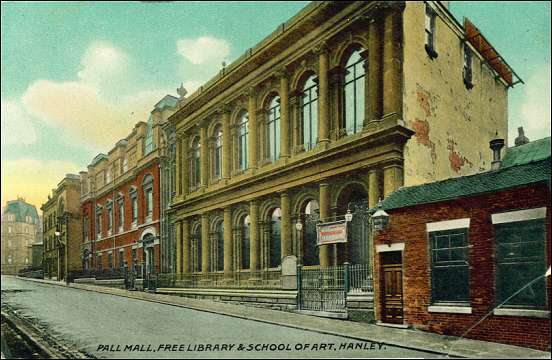George Cartlidge
![]()
George Cartlidge (1868-1961), British ceramic artist and designer, Stoke-upon-Trent
George Cartlidge (1868–1961) was a distinguished British ceramic artist and designer, celebrated for his contributions to the Arts and Crafts movement in early 20th-century Staffordshire. His work is renowned for its innovative techniques and distinctive aesthetic, particularly in portrait tiles and decorative pottery.
Early Life and Education:Born around 1868. In 1878 Cartlidge began a formal art education at the Hanley School of Art in Stoke-on-Trent. He bean teaching art in 1897. This institution, as well as the Burslem School of Art, was a cornerstone for nurturing artistic talent in the heart of England's pottery industry.
Career at Sherwin & Cotton:Cartlidge worked for the tile manufacturer Sherwin & Cotton in the mid-1880s, remaining there until approximately 1910.
Cartlidge exhibited at the Royal Academy in London in 1900 and 1901.
During his time at Sherwin & Cotton he gained acclaim for his emaux ombrant portrait tiles, which featured low-relief designs of literary and cultural figures, including characters from Charles Dickens' novels.
Morris Ware and Hancock & Sons:In 1916, Cartlidge joined Sampson Hancock & Sons, where he played a pivotal role in developing the Morris Ware line between 1917 and 1923. This collection showcased vibrant, tubelined floral motifs—such as thistles, cornflowers, and tulips—set against matte glazes, reflecting the Arts and Crafts ethos. Cartlidge's designs were instrumental in shaping the aesthetic direction of Hancock & Sons, influencing subsequent ranges by designers like F. X. Abraham and Molly Hancock.
John H Barratt & Co Ltd:
George Cartlidge worked for the tile manufacturer John H Barratt & Co.
Following World War One Cartlidge travelled to the USA where he modelled portrait panels and designed tiles for a manufacturer in Newport, Kentucky. During his time in America, he continued to send his designs back to England for production.

Postcard of Pall Mall, Hanley - Free Library & School of Art
In 1847, under the auspices of the London School of Design, the Potteries School of Design was founded. At first it consisted of two schools, one at Stoke Town Hall and the other in rooms at the British School, but the Hanley branch became independent in 1860. Under the head masterships of Samuel Cartlidge (1882-1900) and his successor, George Cartlidge, the school reached a high standard of achievement, but, with the amalgamation of the Six Towns' art schools after Federation, the Hanley school lost ground to its rival at Burslem, and was eventually closed in its centenary year.
- more on The British School, Hanley -
| Art UK | The Concise Encyclopedia of English Pottery & Porcelain, p43, Mankowitx & Haggar.
Emaux ombrant:
The term is "derived from the French term for 'shadow enamels,' refers to a decorative technique used in tiling. It involves applying a translucent glaze onto a tile with relief decorations. The glaze collects in the recessed areas, creating subtle variations of light and dark, resulting in delicate and intricate gradations." Clay & Stone glossary of tiling terms. [back]